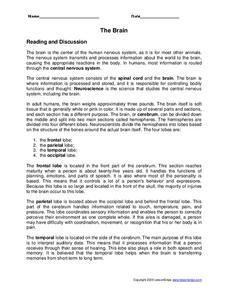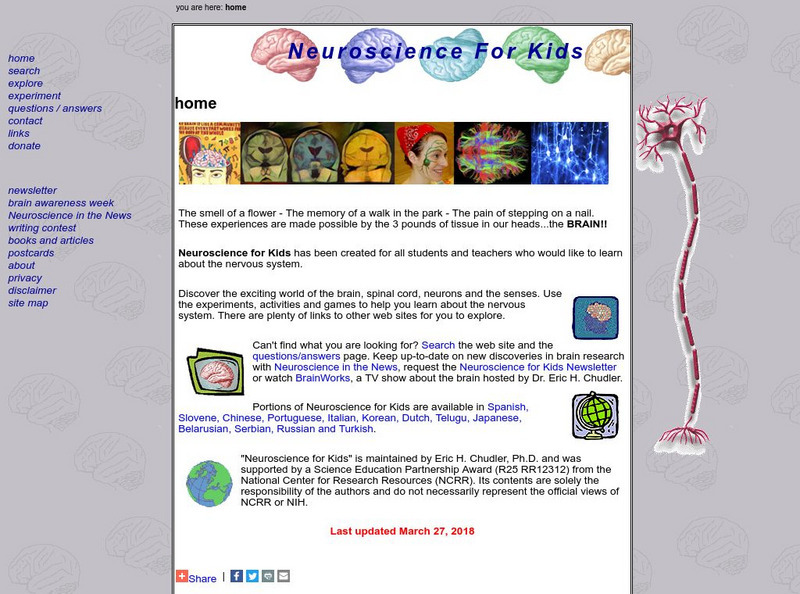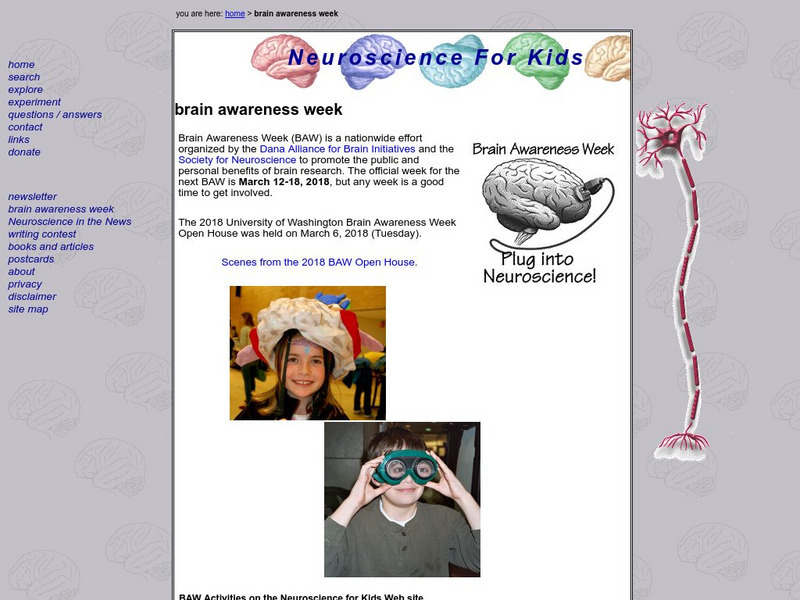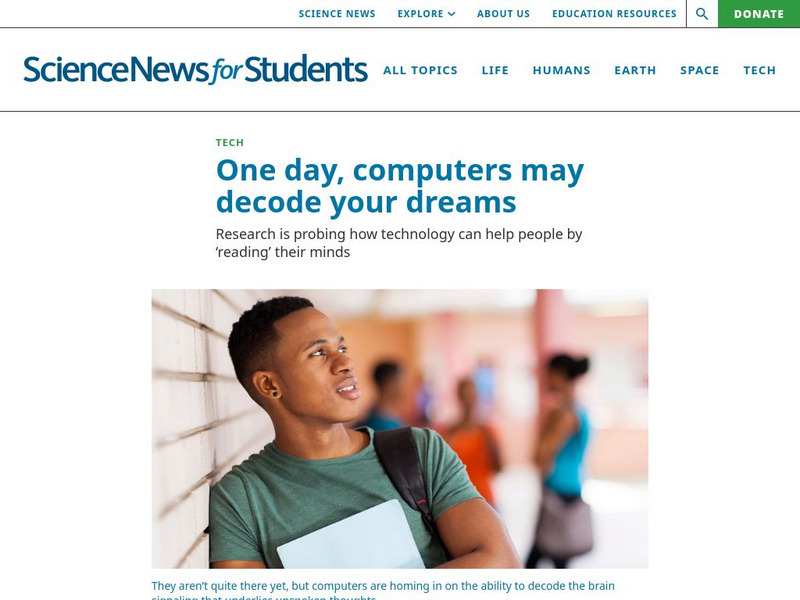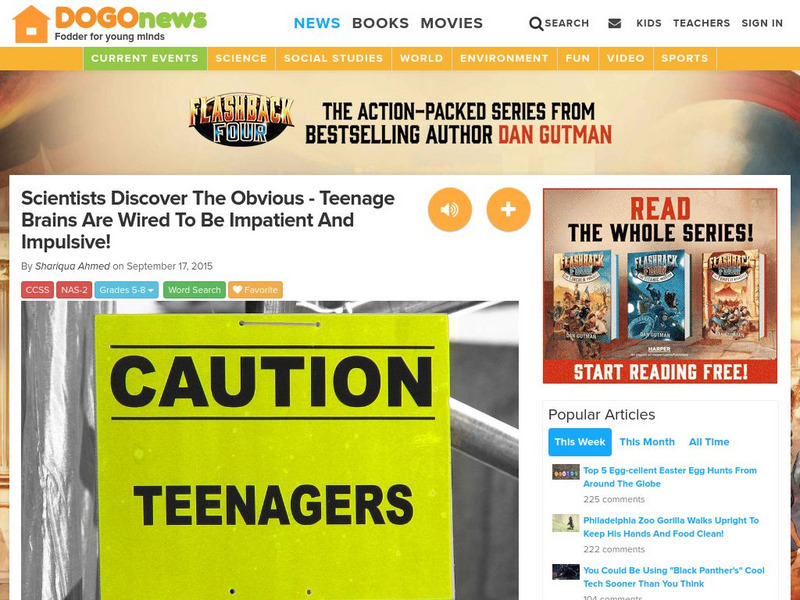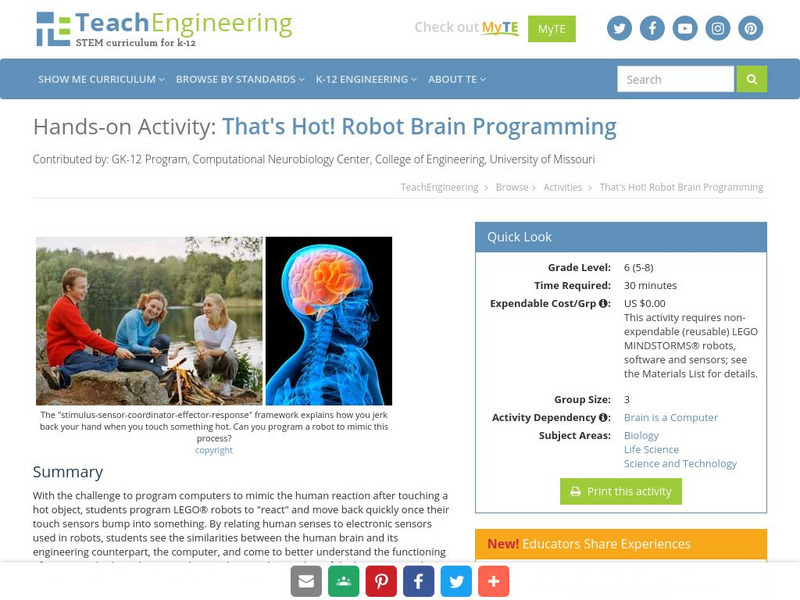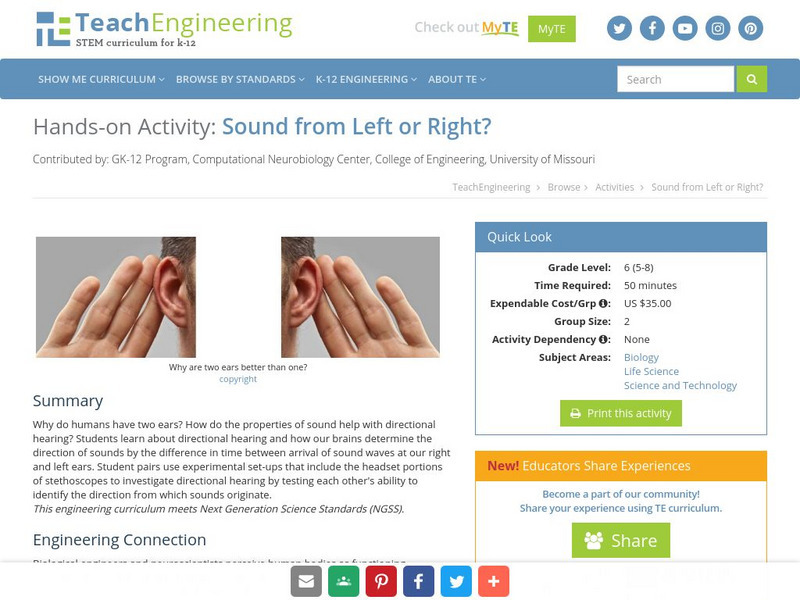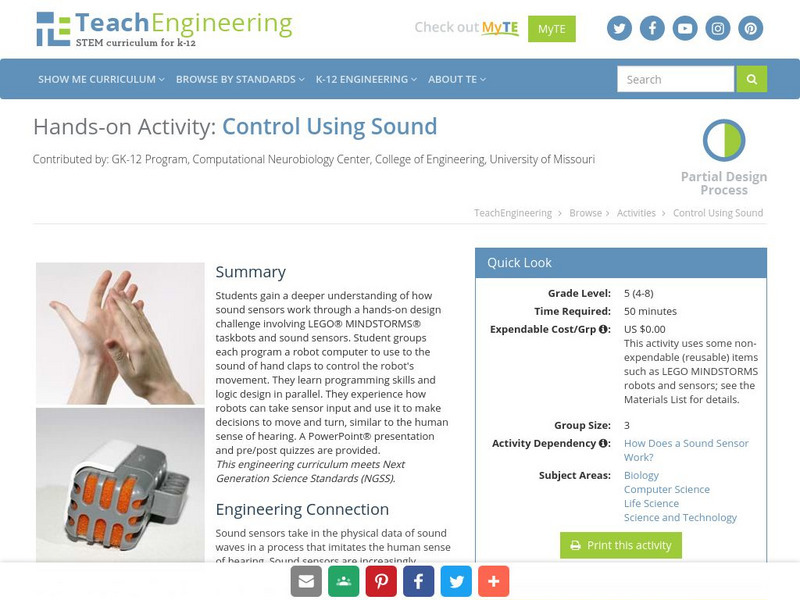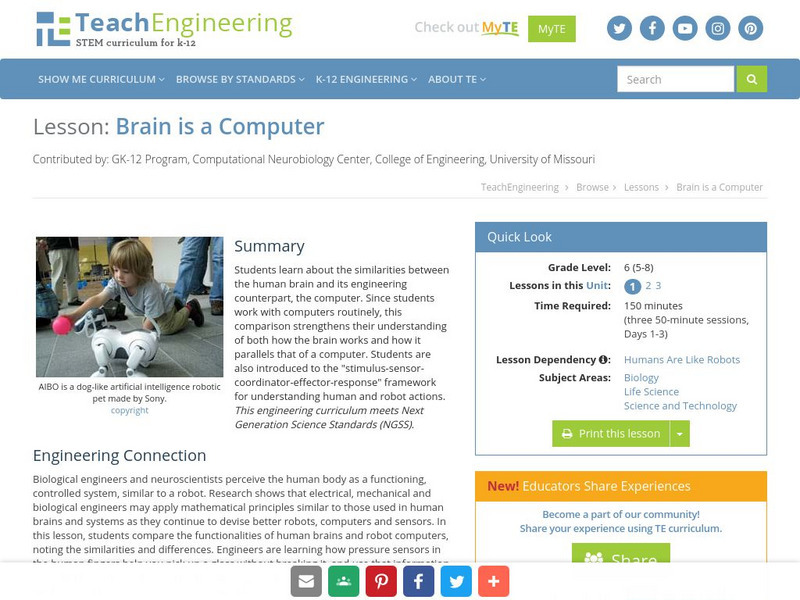Curated OER
Word Connections
Students explore the science of word associations. They take a memory quiz, read articles on how the brain processes language, explore the concept of false memories and create and illustrate their own original word associations.
Curated OER
The Brain
In this brain worksheet, students read about the brain, its four parts, and their functions, and answer comprehension questions. In this fill in the blank and true and false worksheet, students answer thirteen questions.
Curated OER
Similar/Different: Nervous System
In this nervous system worksheet, students identify 2 ways that a computer and brain, a telephone wire and the spinal cord and a camera and an eye are similar and different.
Curated OER
I Belong to.....(The Senses)
For this neuroscience for kids worksheet, learners identify whether each of the 20 body parts listed belongs to the eye, ear, nose, or mouth.
Curated OER
The Nervous System from A to Z
In this nervous system alphabet book worksheet, students study 26 neuroscience terms as they read the 26 terms and their definitions in the glossary. Some of the terms included are: receptor, unipolar, white matter, axon, hemisphere,...
Cosmo Learning
Cosmo Learning: The Future of Human Health
Series of seven video lectures delivered by Standford University professors on the future and frontiers of human health. Videos vary in length. Comments sections at the bottom of the page.
Biotechnology Institute
Biotechnology Institute: Your World: Investigating [Pdf]
Take a glimpse at the way normal brains work and about brain disorders. Learn how research and technology help us learn about the fundamental molecular workings of the brain.
University of Washington
University of Washington: Neuroscience for Kids
Created for all students and teachers who would like to learn more about the nervous system, this extensive University of Washington site offers information, resources, games, and activities galore. Offers dozens of links to related sites.
University of Washington
University of Wash: Hows, Whats and Whos of Neuroscience
Concise and quick answers to questions about neuroscience and neuroscientists.
Rice University
Rice University: Web Adventures: Reconstructors: A Plaguing Problem
Online adventure game consisting of five consecutive episodes where you become a member of a team of scientists who investigate pain relieving drugs to see if they are safe. Episodes should be played in order; however, they can be...
University of Washington
Neuroscience for Kids: Brain Awareness Week
Although this site is for Brain Awareness Week, the many hyperlinks on the site are very worthwhile in the study of neuroscience. Be sure to check out the many activities on the experiments and activities page.
BioEd Online
Bio Ed Online: The Learning Brain: Neuroscience
This series of videos introduces students to the brain, including why it is so special, its parts and functions and how it recalls memories and stores new information. Other videos explain how the brain processes sensory information and...
Society for Science and the Public
Science News for Students: One Day, Computers May Decode Your Dreams
Wouldn't it be cool to read someone's mind? Maybe? Neuroscientists at the University of Pittsburgh are developing a mind-reading computer system to hep people with nerve damage send messages from the brain to parts of the body to create...
PBS
Pbs Newshour Extra: Neuroscience Basics Through Puzzles and Dance
This interesting lesson plans uses giant neutron puzzles, the game of telephone, and dance to explain how transmitters and receptors work in neurotransmission.
DOGO Media
Dogo News: Teenage Brains Wired to Be Impatient and Impulsive
Article reports on new research that helps explain the functioning of the teenage brain, and how it differs from that of an adult.
Washington State University
Washington State University: Ask Dr. Universe: Why Do Musicians Use Both Sides of Their Brains?
Website using a question-answer format in which Dr. Universe attempts to answer a curious question a student has about why musicians use both sides of their brains.
TeachEngineering
Teach Engineering: That's Hot! Robot Brain Programming
With the challenge to program computers to mimic the human reaction after touching a hot object, students program LEGO robots to "react" and move back quickly once their touch sensors bump into something. By relating human senses to...
TeachEngineering
Teach Engineering: Sound From Left or Right?
Why do humans have two ears? How do the properties of sound help with directional hearing? Students learn about directional hearing and how our brains determine the direction of sounds by the difference in time between arrival of sound...
TeachEngineering
Teach Engineering: Pupillary Response & Test Your Reaction Time
Students observe and test their reflexes, including the (involuntary) pupillary response and (voluntary) reaction times using their dominant and non-dominant hands, as a way to further explore how reflexes occur in humans. They gain...
TeachEngineering
Teach Engineering: Music by Touch
Through a hands-on design challenge involving LEGO MINDSTORMS NXT robots, students learn programming skills and logic design as they program robot computers to play sounds and rotate a wheel when a touch sensor is pressed, and then...
TeachEngineering
Teach Engineering: Control Using Sound
Students gain a deeper understanding of how sound sensors work through a hands-on design challenge involving LEGO MINDSTORMS NXT taskbots and sound sensors.
TeachEngineering
Teach Engineering: Don't Bump Into Me!
Students' understanding of how robotic ultrasonic sensors work is reinforced in a design challenge involving LEGO MINDSTORMS NXT robots and ultrasonic sensors.
TeachEngineering
Teach Engineering: Our Bodies Have Computers and Sensors
Students learn about the human body's system components, specifically its sensory systems, nervous system and brain, while comparing them to robot system components, such as sensors and computers. The unit's life sciences-to-engineering...
TeachEngineering
Teach Engineering: Brain Is a Computer
Students learn about the similarities between the human brain and its engineering counterpart, the computer. Since students work with computers routinely, this comparison strengthens their understanding of both how the brain works and...



